 Last additions - KYOTO 京都府 Last additions - KYOTO 京都府 |
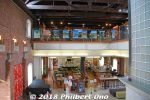
Inside the huge Maizuru World Brick Museum. It was used to store torpedoes made by munitions factories in Maizuru. Restaurant on the groundfloor, museum on the upper level.Dec 17, 2018
|
|
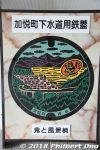
Manhole for Kaya-cho, Yosano, Kyoto Prefecture.Nov 27, 2018
|
|
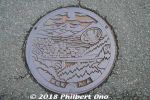
Manhole for Kaya-cho, Yosano, Kyoto Prefecture.Nov 27, 2018
|
|
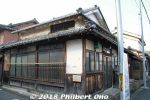
Nov 27, 2018
|
|
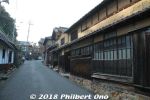
Nov 27, 2018
|
|
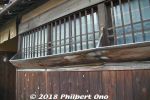
Nov 27, 2018
|
|
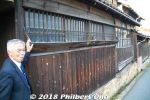
This home housed a chirimen factory and these windows let in light and air, but kept out prying eyes from passersby in the old days (when people were shorter I guess). Chirimen makers had secrets to keep.Nov 27, 2018
|
|
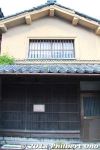
Many of the Chirimen Kaido homes have explanatory signs, but you cannot enter them since they are private homes.Nov 27, 2018
|
|
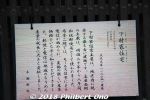
Nov 27, 2018
|
|
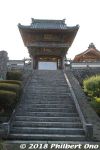
Nov 27, 2018
|
|
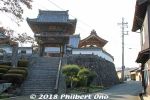
Temples were established here to defend against castle attackers.Nov 27, 2018
|
|
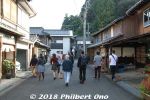
Nov 27, 2018
|
|
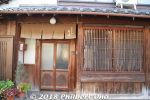
Nov 27, 2018
|
|
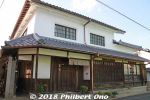
Nov 27, 2018
|
|
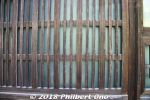
The windw lattice design indicated the family's occupation.Nov 27, 2018
|
|
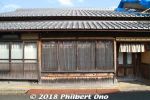
Nov 27, 2018
|
|
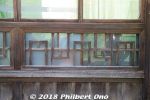
Nov 27, 2018
|
|

After the Bito Home, we continued our walking tour of Chirimen Kaido Road. Our guide, Aoki Jun'ichi, from Yosano Tourist Association, showed this exterior lattice design featuring the kanji character for "Tan" (from "Tango" 丹後) which is similar (by no coincidence in this case) to the kanji character for "yen" (円).Nov 27, 2018
|
|
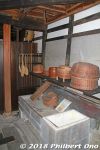
KitchenNov 27, 2018
|
|
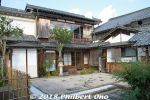
Nov 27, 2018
|
|
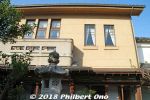
The first floor was Japanese style, while the second floor was Western-style (Spanish).Nov 27, 2018
|
|
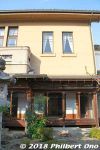
The first floor was Japanese style, while the second floor was Western-style (Spanish).Former Bito family home, Yosano, Kyoto Prefecture.Nov 27, 2018
|
|
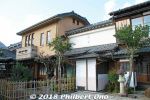
The house was originally a farmhouse built and expanded during 1863 to 1930. Toward the left on the second floor is the Western-style (Spanish) part of the house built in 1928. Nov 27, 2018
|
|
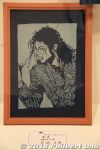
Michael JacksonNov 27, 2018
|
|
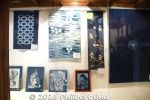
Nov 27, 2018
|
|
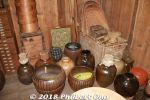
Nov 27, 2018
|
|
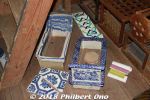
Old porcelain toilets.Nov 27, 2018
|
|

Exhibits in the kura storehouse.Nov 27, 2018
|
|
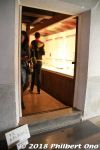
Exhibits in the kura storehouse.Nov 27, 2018
|
|
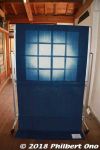
Nov 27, 2018
|
|
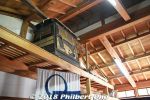
PalanquinNov 27, 2018
|
|
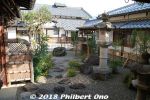
Inner courtyardNov 27, 2018
|
|
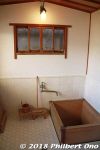
BathroomNov 27, 2018
|
|
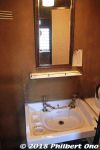
Bathroom sinkNov 27, 2018
|
|
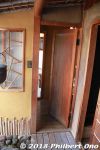
To Bathroom.Nov 27, 2018
|
|
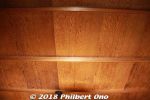
Ceiling wood is very rare, made of yaku-sugi cedar wood (屋久杉). Yaku-sugi is hundreds of years old, native to Yakushima island in Kagoshima Prefecture, and now illegal to cut down.Nov 27, 2018
|
|
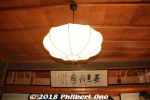
Nov 27, 2018
|
|
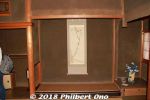
Nov 27, 2018
|
|
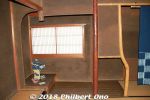
The Japanese-style first floor used very expensive materials. These thin wood pillars are shochikubai (matsu pine, bamboo, and ume plum tree).Former Bito family home, Yosano, Kyoto Prefecture.Nov 27, 2018
|
|
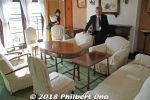
Western-style (Spanish) 2nd floor living room.Nov 27, 2018
|
|
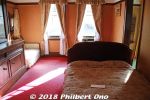
Western-style (Spanish) 2nd floor bedroom.Nov 27, 2018
|
|
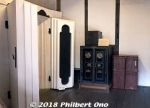
Kura storehouse and vault.Nov 27, 2018
|
|
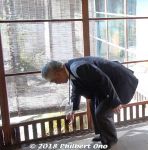
Before air conditioners, they had these sliding slats for ventilation in summer.Nov 27, 2018
|
|
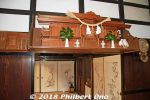
Houehold shrine inside Former Bito Family Merchant's House (Kyu-Bitoke 旧尾藤家).Nov 27, 2018
|
|
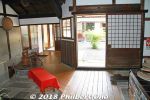
Nov 27, 2018
|
|
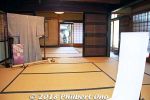
Inside the Former Bito Family Merchant's House (Kyu-Bitoke 旧尾藤家).Nov 27, 2018
|
|
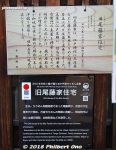
About the Former Bito Family Merchant's House (Kyu-Bitoke 旧尾藤家).Nov 27, 2018
|
|
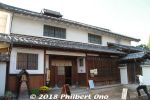
One home on the Chirimen Kaido Road the public can enter is the Former Bito Family Merchant's House (Kyu-Bitoke 旧尾藤家). The Bito family was a raw silk and chirimen wholesaler since the Edo Period. Very prominent and rich local family who also became active in local government and business during the Meiji Period.
http://www.yosano.or.jp/chirimen-kaido/?page_id=162Nov 27, 2018
|
|
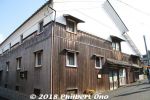
Sake cellar.Nov 27, 2018
|
|
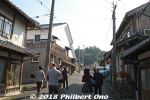
Chirimen Kaido Road has a walking route to see the traditional buildings still remaining. That's a sake cellar on the left.Nov 27, 2018
|
|
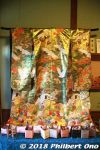
Kimono displayed in Izutsuya ryokan.Nov 27, 2018
|
|
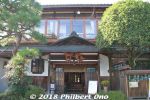
There used to be four ryokan here, but this Izutsuya ryokan 井筒屋 is the only ryokan remaining in Chirimen Kaido.Nov 27, 2018
|
|
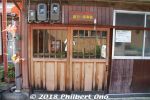
One house had a small chirimen factory we could view through a window.Nov 27, 2018
|
|
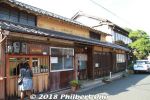
One house had a small chirimen factory we could view through a window.Nov 27, 2018
|
|
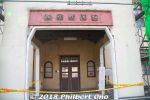
Entrance to former Kaya Town Hall (旧加悦町役場庁舎) that was built in the 1930s. Currently closed.Nov 27, 2018
|
|
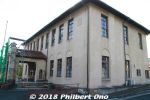
Former Kaya Town Hall (旧加悦町役場庁舎) that was built in the 1930s. Nov 27, 2018
|
|

Chirimen Kaido Road is a Tango chirimen manufacturing area in Kaya. Originally a castle town with Yasurajo Castle.Since it was a castle town (during the Sengoku Warring States Period), a few streets have sharp, narrow turns or corners to defend against any invading enemies. Some of the traditional homes were built in the 19th century or 1920s-30s. Part of the district escaped damage from the 1927 Tango earthquake.Nov 27, 2018
|
|

Jizo statueNov 27, 2018
|
|

About the Power stones.Nov 27, 2018
|
|
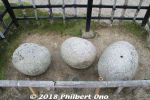
Power stones.Nov 27, 2018
|
|
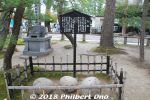
Power stones.Nov 27, 2018
|
|
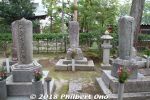
Nov 27, 2018
|
|
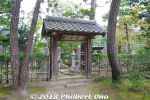
Small cemetery for temple priests.Nov 27, 2018
|
|
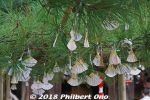
Omikuji paper fortunes shaped like a folding fan.Nov 27, 2018
|
|

Benzaiten shrine for the goddess of music and water.Nov 27, 2018
|
|
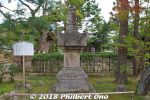
Nov 27, 2018
|
|

Temple bell tower reconstructed in 1973. 鐘楼Nov 27, 2018
|
|
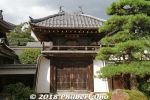
Bell Tower Gate built in 1722. 鐘楼門Nov 27, 2018
|
|

About the Circle of Wisdom Lantern.Nov 27, 2018
|
|
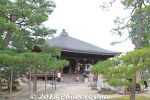
MonjudoNov 27, 2018
|
|
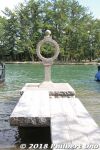
Next to Chionji Temple is this Circle of Wisdom Lantern (智恵の輪 灯籠). No longer a lantern to guide ships. Across the water is the Amanohashidate sandbar.Nov 27, 2018
|
|
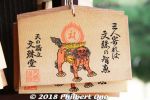
Ema prayer tablet.Nov 27, 2018
|
|
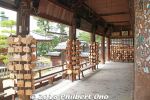
MonjudoNov 27, 2018
|
|
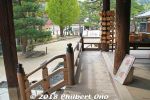
MonjudoNov 27, 2018
|
|
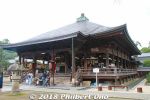
Chionji's main temple hall, Monjudo. 文殊堂Nov 27, 2018
|
|
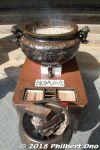
Incense burner in front of Monjudo.Nov 27, 2018
|
|
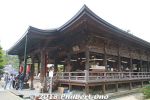
Chionji's main temple hall, Monjudo. 文殊堂Nov 27, 2018
|
|
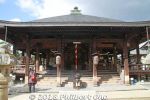
Chionji's main temple hall named the Monjudo. 文殊堂Nov 27, 2018
|
|
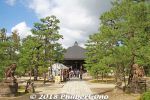
Approaching the main temple hall.Nov 27, 2018
|
|
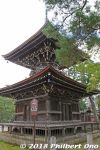
Chionji Temple's Tahoto Pagoda. 多宝塔Nov 27, 2018
|
|
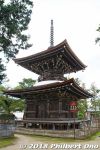
Chionji Temple's Tahoto Pagoda is the Tango region's only relic remaining from the Muromachi Period. 多宝塔Nov 27, 2018
|
|
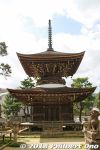
Chionji Temple's Tahoto Pagoda was built in the 16th century. 多宝塔Nov 27, 2018
|
|
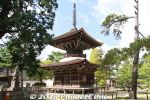
The elegant Tahoto Pagoda, a National Important Cultural Property. 多宝塔Nov 27, 2018
|
|
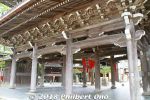
Sanmon Gate. 山門Nov 27, 2018
|
|
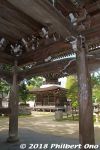
Sanmon Gate. 山門Nov 27, 2018
|
|
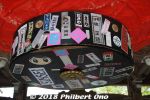
Paper lantern in Sanmon Gate.Nov 27, 2018
|
|
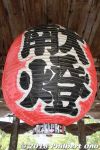
Paper lantern in Sanmon Gate.Nov 27, 2018
|
|

Belonging to the Rinzai Zen Sect, Chionji worships the Manjushri bodhisattva (Monju Bosatsu) for wisdom and academic abilities. Many students pray here. Nov 27, 2018
|
|
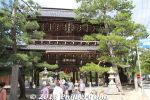
Visitors to Amanohashidate can hardly miss Chionji Temple when you see this large Sanmon gate next to the entrance of Amanohashidate at the southern end. Since you're there, might as well see the temple too. 山門Map: https://goo.gl/maps/Anjk19rRLzT2Nov 27, 2018
|
|
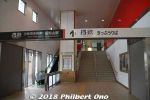
At Fukuchyama Station, the entrance to the Kyoto Tango Railway platform.Nov 27, 2018
|
|
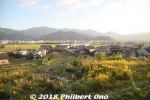
On the train back.Nov 27, 2018
|
|
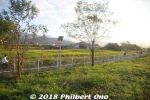
On the train back.Nov 27, 2018
|
|
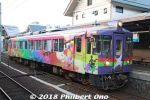
Amanohashidate area has all these neat, painted trains.Nov 27, 2018
|
|
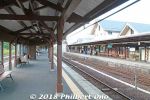
Amanohashidate Station plaform.Nov 27, 2018
|
|
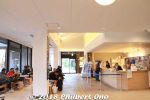
Inside Amanohashidate Station.Nov 27, 2018
|
|
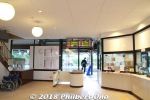
Inside Amanohashidate Station. Nice station with luggage lockers and English-speaking tourist information desk.Nov 27, 2018
|
|
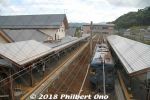
Amanohashidate StationNov 27, 2018
|
|
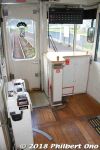
Nov 27, 2018
|
|
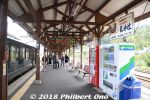
Amanohashidate StationNov 27, 2018
|
|
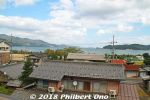
View from the Aomatsu train.Kyoto Tango Railway has another cafe train named "Akamatsu" that runs twice a day (except on Tue. and Wed.) between Nishi-Maizuru and Amanohashidate. But this train requires reservations.
https://trains.willer.co.jp/matsu/akamatsu.html
There's also the "Kuromatsu" restaurant train that runs on Fri., Sat., Sun., and national holidays. You can order a full dinner or confections or sake. The train fare includes the meal or drinks and obviously will be much more expensive than regular train fare.
https://trains.willer.co.jp/matsu/
Nov 27, 2018
|
|
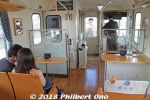
Front of the Aomatsu train.The Aomatsu train runs only twice a day from Fukuchiyama to Amanohashidate taking about an hour. Love this train.
https://trains.willer.co.jp/matsu/aomatsu.htmlNov 27, 2018
|
|
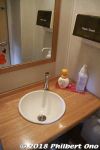
Bathroom sink.Nov 27, 2018
|
|
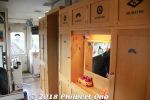
Nov 27, 2018
|
|
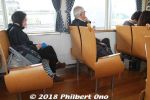
Toward the front of the train are regular seats.Nov 27, 2018
|
|
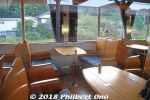
Cafe-type seats (wooden) with a table.Nov 27, 2018
|
|
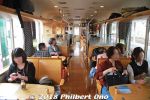
Cafe-type seats (wooden) with a table.Nov 27, 2018
|
|
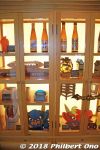
Wooden showcase.Nov 27, 2018
|
|
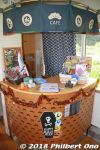
There's a staffed bar where you can order drinks and food.Nov 27, 2018
|
|
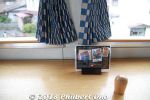
Counter seat with a knob to hold on to.Nov 27, 2018
|
|
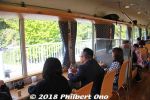
Window seats at the counter.Nov 27, 2018
|
|
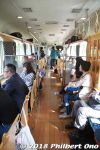
Aomatsu is special because the interior is wooden and it has a variety of seating (train fare is the same for all seats).It's a cafe train and you can order drinks (including alcohol) and light meals. No reservations required, and it's all non-reserved. Train fare is the same as regular trains.Nov 27, 2018
|
|
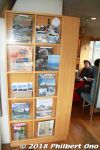
Enter the Aomatsu train and see this rack of tourist pamphlets.Nov 27, 2018
|
|
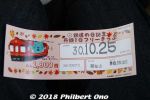
This Kyoto Tango Railways one-day train pass is a good deal.Nov 27, 2018
|
|
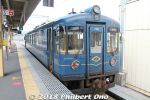
The Aomatsu train runs once every morning (10:17 am) and afternoon (3:17 pm) from Fukuchiyama Station to Amanohashidate Station and requires no reservations or extra train fare.Nov 27, 2018
|
|
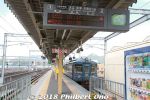
At JR Fukuchiyama Station, Kyoto Tango Railways operates a special tourist train named "Aomatsu" to Amanohashidate. It's just one train car.It's a cafe train that serves drinks and light meals.
JR Fukuchiyama Station is a major gateway to northern Kyoto Prefecture because it is a terminal station for Kyoto Tango Railway, the dominant train network in this area.Nov 27, 2018
|
|
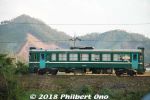
Kyoto Tango Railway (abbreviated as "Tantetsu") is the dominant train network in this area.Nov 27, 2018
|
|
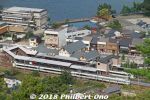
Amanohashidate Station as seen from Amanohashidate Viewland.Nov 27, 2018
|
|
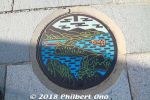
Amanohashidate manhole is based on the view from the southern end.Nov 27, 2018
|
|
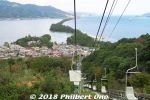
Chiarlift down from Amanohashidate Viewland.Nov 27, 2018
|
|
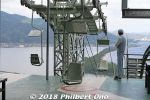
Chairlift down.Nov 27, 2018
|
|

About the Circle of Wisdom.Nov 27, 2018
|
|
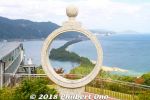
Another Circle of Wisdom at Amanohashidate Viewland.Nov 27, 2018
|
|
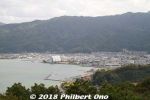
Nov 27, 2018
|
|

Map of Amanohashidate Viewland amusement park.Nov 27, 2018
|
|
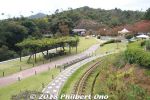
Amanohashidate Viewland's amusement park for kids.Nov 27, 2018
|
|
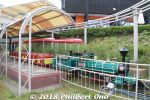
Besides having lookout decks, Amanohashidate Viewland is a small amusement park for kids.Nov 27, 2018
|
|
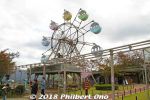
This small ferris wheel at Amanohashidate Viewland is visible to the naked eye from across the sandbar.Nov 27, 2018
|
|
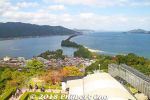
Nov 27, 2018
|
|
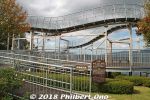
Amanohashidate Viewland has this elevated walkway to view Amanohashidate. Not good if you're afraid of heights.Nov 27, 2018
|
|
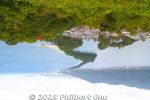
That's the dragon's head in the front and the slim tail in the back. When you see it upside down, the sandbar/dragon is in the sky right?Nov 27, 2018
|
|

On the southern end here, Amanohashidate upside down looks like a flying dragon (hiryu 飛竜). Nov 27, 2018
|
|
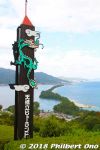
On the southern end here, Amanohashidate upside down looks like a flying dragon (hiryu 飛竜). Nov 27, 2018
|
|
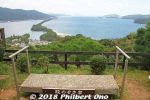
Platform to view the sandbar upside down. Nov 27, 2018
|
|
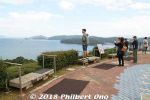
Platforms where you supposed to view the sandbar upside down. Nov 27, 2018
|
|
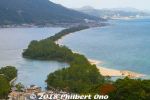
The thing about Amanohashidate is that it looks very different from different lookout points. The most popular spots to view Amanohashidate are on the hilltop on the southern end and northern end.If you have time, I highly recommend that you see it from both the southern end and northern ends. Which means you should rent a bicycle and ride across Amanohashidate.
This is from the hilltop on the southern end, from a small amusement park called Amanohashidate Viewland easily accessible via chair lift or cable car, and a short walk from Amanohashidate Station. Map: https://goo.gl/maps/yNhxjwK2ocz
This southern end connects to mainland Japan, so what you see in the distance is Tango Peninsula up north.
The left side is the west side with an enclosed, but connected ocean named Asoumi Sea. The right side is the east side with white-sand beaches facing the open ocean. Ships can still go through both sides of the sandbar through a narrow strait on the southern end.
The greenery area on the lower left facing the sandbar is Chionji Temple.Nov 27, 2018
|
|
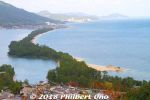
On the lower right of the sandbar, notice the finger of sand extending into the ocean. This finger keeps growing as the northern sand erodes and drifts over to it. So every few years, they have to remove the excess sand. (Notice the power shovel and dump truck working on it.) Otherwise, this little sand spit will become another sandbar across the ocean, impeding local shipping.Nov 27, 2018
|
|
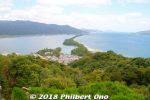
Nov 27, 2018
|
|
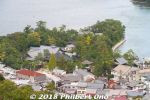
Chionji TempleNov 27, 2018
|
|
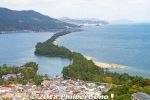
Amanohashidate as seen from the southern end atop Amanohashidate Viewland.Nov 27, 2018
|
|
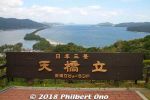
Amanohashidate from Amanohashidate Viewland (southern end).Nov 27, 2018
|
|
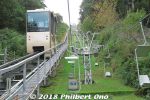
Chair lift and monorail car for Amanohashidate Viewland. Taking the chair lift is faster than the monorail car.Nov 27, 2018
|
|
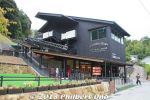
Chair lift and cable car station for Amanohashidate Viewland. Short walk from Amanohashidate Station.Nov 27, 2018
|
|
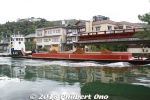
Ship coming through.Nov 27, 2018
|
|
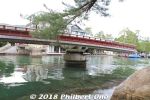
After bicycling across Amanohashidate back to the southern end, the rotating bridge again making room for a ship.Nov 27, 2018
|
|
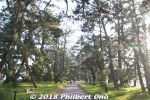
Nov 27, 2018
|
|
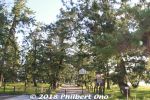
Entrance to Amanohashidate's northern end.Nov 27, 2018
|
|
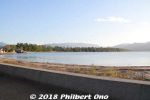
AmanohashidateNov 27, 2018
|
|
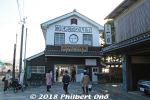
Boat dock on the northern end to cross by boat if you don't want to cycle.Nov 27, 2018
|
|
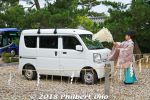
Lucky to see a shrine priest bless a vehicle for traffic safety.Nov 27, 2018
|
|

Nov 27, 2018
|
|

Moto-Ise Kono Shrine torii. No photos beyond this torii.Nov 27, 2018
|
|
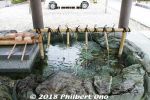
Nov 27, 2018
|
|
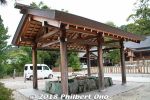
Purify yourself here.Nov 27, 2018
|
|
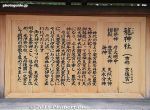
About Moto-Ise Kono Shrine (元伊勢籠神社). Before Ise Jingu was established around the 7th century (or earlier), a number of shrines for these two deities were temporarily or permanently established in various locations including this Kono Shrine. These pre-Ise Jingu shrines are prefixed with "Moto-Ise." Kono Shrine worships five gods and one of them is Toyouke-Omikami (豊受大神), the same goddess of agriculture worshiped in Ise.Nov 27, 2018
|
|

Moto-Ise Kono Shrine (元伊勢籠神社)Ise Grand Shrines (Ise Jingu) in Mie Prefecture are Japan's most sacred Shinto shrines. They are dedicated to the Sun Goddess Amaterasu (Shinto's most important goddess and legendary ancestor of the Imperial family) and Toyouke-Omikami (豊受大神), goddess of agriculture. Nov 27, 2018
|
|
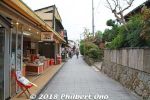
Path to nearby Moto-Ise Kono Shrine.Nov 27, 2018
|
|
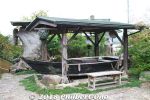
Nov 27, 2018
|
|
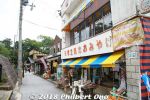
Path to nearby Moto-Ise Kono Shrine is lined with souvenir shops.Nov 27, 2018
|
|
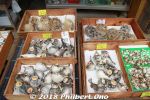
Puffer fish.Nov 27, 2018
|
|

Old postbox and a message.Nov 27, 2018
|
|
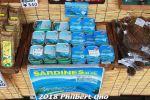
Amanohashidate sardines supposed to be good.Nov 27, 2018
|
|
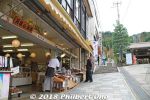
Souvenir shops near the chair lift station at Fuchu Station.Nov 27, 2018
|
|
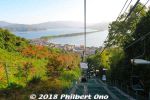
Chair lift down from Kasamatsu Park has nice views.Nov 27, 2018
|
|
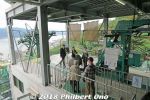
Chair lift to go down from Kasamatsu Park.Nov 27, 2018
|
|
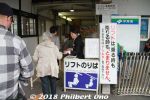
Entrance to chair lift to go down from Kasamatsu Park.Nov 27, 2018
|
|
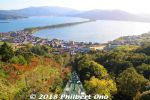
Nov 27, 2018
|
|
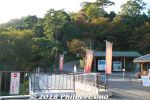
Nov 27, 2018
|
|
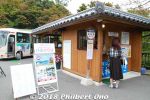
Bus stop to Nariaiji temple further up the hill, one of the 33 Saigoku Kannon Pilgrimage Temples.Nov 27, 2018
|
|
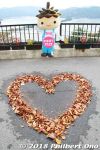
Autumn heart at Amanohashidate.Nov 27, 2018
|
|

How Amanohashidate was formed, according to mythology.Nov 27, 2018
|
|
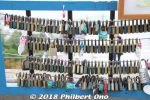
Padlocks for lovers.Nov 27, 2018
|
|
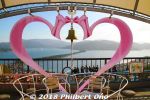
And so Amanohashidate symbolizes a link between Heaven and Earth and between two lovers. That's why you may also see heart or love symbols at Amanohashidate.Nov 27, 2018
|
|

Nov 27, 2018
|
|
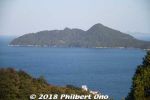
Nov 27, 2018
|
|
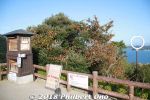
Another Ring of Wisdom on Kasamatsu Park.Nov 27, 2018
|
|
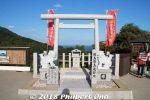
Nov 27, 2018
|
|
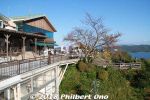
Nov 27, 2018
|
|
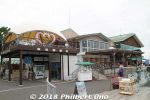
Kasamatsu Park has the usual touristy restaurants and shops. Nice benches and no amusement park.Nov 27, 2018
|
|
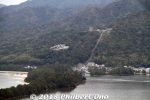
Southern end of Amanohashidate. Amanohashidate Viewland can be seen.Nov 27, 2018
|
|
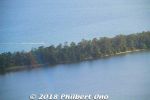
Closeup of Amanohashidate.Nov 27, 2018
|
|
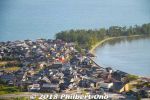
Nov 27, 2018
|
|
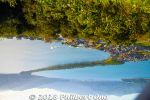
Upside down, it supposed to look like a bridge to heaven.Nov 27, 2018
|
|
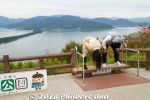
Look at Amanohashidate upside down.Nov 27, 2018
|
|
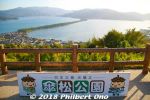
Amanohashidate as seen from the northern end atop Kasamatsu Park.Nov 27, 2018
|
|
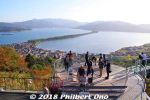
Amanohashidate as seen from the northern end atop Kasamatsu Park.Amanohashidate is a sandbar created since thousands of years ago by opposing ocean currents carrying sand. According to Japanese mythology, Amanohashidate was created during the age of gods (before man appeared). The great god Izanagi in Heaven, built a long floating ladder-bridge from Heaven to Earth so he could see his wife the goddess Izanami who was living at Moto-Ise Kono Shrine on Earth. However, in a single night while he was asleep, the bridge collapsed and fell to Earth, where Amanohashidate is today. And so if you view it upside down at Kasamatsu Park, it's supposed to look like a bridge to heaven which is what "Amanohashidate" means.Nov 27, 2018
|
|
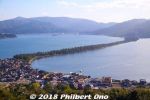
Amanohashidate is northern Kyoto's main attraction and very famous for centuries as one of Japan's Scenic Trio (Nihon Sankei 日本三景). The other two in the scenic trio are Miyajima (vermillion torii and shrine on the ocean) in Hiroshima and Matsushima (pine tree islands) near Sendai, Miyagi Prefecture. It's about 3.6 km long, totally flat, and you can cross it on foot or by bicycle (rentals available) on a dirt road in the middle. The road is lined with thousands of Japanese pine trees and closed to vehicular traffic. This view is from the northern end atop Kasamatsu Park. Near Amanohashidate Station.Nov 27, 2018
|
|
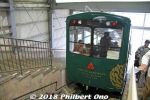
Arriving Kasamatsu Park on cable car.Nov 27, 2018
|
|
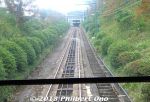
Cable car to Kasamatsu Park.Nov 27, 2018
|
|
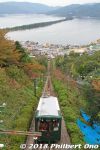
Cable car to Kasamatsu Park.Nov 27, 2018
|
|

Cable car to Kasamatsu Park.Nov 27, 2018
|
|
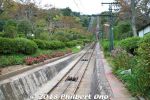
Cable car to Kasamatsu Park.Nov 27, 2018
|
|
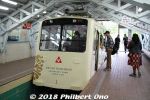
Cable car if you're afraid of heights.Nov 27, 2018
|
|
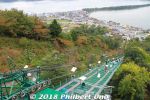
Chair lift to Kasamatsu Park. Nov 27, 2018
|
|
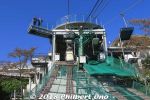
Arriving Kasamatsu Park on the chairlift.Nov 27, 2018
|
|
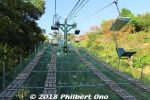
Chair lift to Kasamatsu Park. Nov 27, 2018
|
|
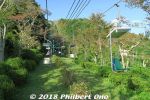
Chair lift to Kasamatsu Park. Nov 27, 2018
|
|
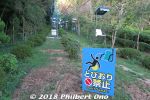
If you're not afraid of heights, take the chair lift. They keep telling you not to jump off even if you dropped something.Nov 27, 2018
|
|
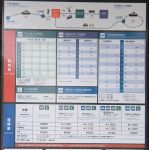
Time schedule and fares for Cable Car and Chair Lift. The chair lift runs non-stop so it's faster than waiting for the next cable car. Nov 27, 2018
|
|
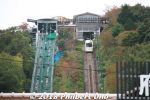
Cable Car and Chair Lift station to go up to Kasamatsu Park.Nov 27, 2018
|
|
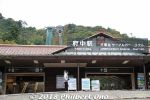
Fuchu Station is the Cable Car and Chair Lift station to go up to Kasamatsu Park on the northern end of Amanohashidate.Nov 27, 2018
|
|
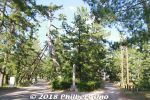
Fork in the road. Go left.Nov 27, 2018
|
|
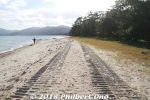
Nov 27, 2018
|
|

Nov 27, 2018
|
|
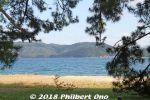
Nov 27, 2018
|
|
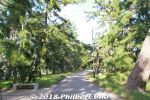
Nov 27, 2018
|
|
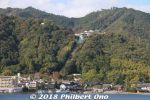
Kasamatsu Park on the hill as seen from Amanohashidate.Nov 27, 2018
|
|

Nov 27, 2018
|
|
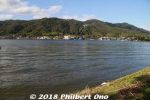
East edge of Amanohashidate looking toward Kasamatsu Park on the hill.Nov 27, 2018
|
|
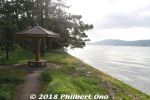
Nov 27, 2018
|
|
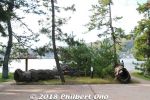
The Twin Dragon Pine Trees were broken. 双龍の松Nov 27, 2018
|
|
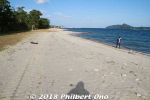
Sunny beach on Amanohashidate.Nov 27, 2018
|
|
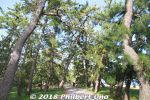
Don't ever get tired of the scenery.Nov 27, 2018
|
|
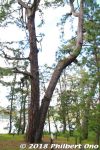
Looks like another wedded pair of pine trees, but it is named "Good Friends pine trees." なかよしの松Nov 27, 2018
|
|
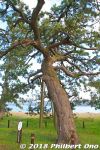
Pine tree for the sawn maiden's clothes. 羽衣の松Nov 27, 2018
|
|
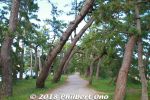
Wind-blown pine trees.Nov 27, 2018
|
|
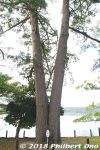
Wedded pine trees on Amanohashidate. (夫婦松) Nov 27, 2018
|
|
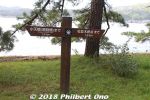
Good to know how far away you are.Nov 27, 2018
|
|
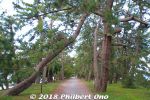
A few pine trees died or were knocked down.Nov 27, 2018
|
|
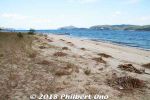
This part of the beach had many little piles of driftwood which they were cleaning up.Nov 27, 2018
|
|
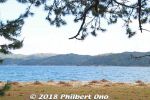
The ocean and beach.Nov 27, 2018
|
|
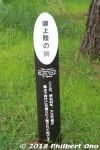
Marker for Emperor Taisho's visit. Anybody who is a somebody has visited Amanohashidate.Nov 27, 2018
|
|
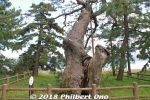
Nov 27, 2018
|
|
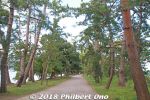
Nov 27, 2018
|
|
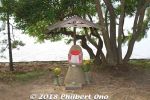
Nov 27, 2018
|
|
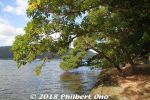
West side of Amanohashidate.Nov 27, 2018
|
|

Nov 27, 2018
|
|
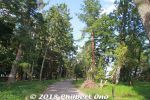
Path on Amanohashidate going north. Almost endless forest of pine trees. Very pleasant cycling ride or walk.Nov 27, 2018
|
|
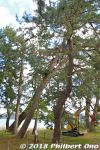
Many pine trees have names.Nov 27, 2018
|
|

About Buson, a famous poet.Nov 27, 2018
|
|
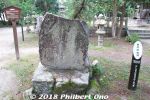
Poetry monument for Buson, a famous poet.Nov 27, 2018
|
|

About "Iso-shimizu" (磯清水) well.Nov 27, 2018
|
|

About "Iso-shimizu" (磯清水).Nov 27, 2018
|
|
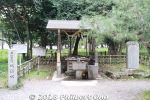
Near Amanohashidate Shrine is this well of pure spring water named "Iso-shimizu" (磯清水) famous since the Heian Period.Nov 27, 2018
|
|

About Amanohashidate Shrine.Nov 27, 2018
|
|
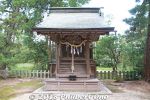
Amanohashidate ShrineNov 27, 2018
|
|
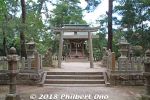
Near the cannon is Amanohashidate Shrine. Nov 27, 2018
|
|

The cannon was never based or used on Amanohashidate. It was originally from the Battleship Kasuga. Donated by the Imperial Navy to the village in 1923 to promote the Imperial Navy.Nov 27, 2018
|
|

Would you believe a cannon on Amanohashidate?Nov 27, 2018
|
|

About swordsman Jutaro Iwami's testing stone.Nov 27, 2018
|
|
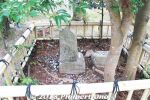
Swordsman Jutaro Iwami's testing stone.Nov 27, 2018
|
|

Wild birds found at Amanohashidate. They only wrote the scientific names of the birds. Looks like they include the seagull, egret, heron, sparrow, and cormorant.Nov 27, 2018
|
|
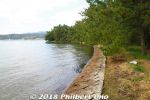
West side of Amanohashidate with no beaches.Nov 27, 2018
|
|
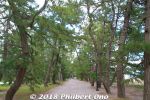
Cycling on Amanohashidate through thousands of Japanese pine trees. It takes 10-15 min. by bicycle without stopping. But there are a number of monuments, shrine, commemorative pine trees, and beaches to photograph along the way. So it took me 30-40 min.Nov 27, 2018
|
|

About Amanohashidate's pine trees.Nov 27, 2018
|
|
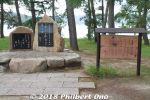
Amanohashidate poetry monument for famous travel poet Yosano Akiko and husband Yosano Tekkan. 与謝野 鉄幹(与謝野 寛)、与謝野 晶子Nov 27, 2018
|
|
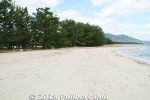
Beach on the east side of Amanohashidate.Nov 27, 2018
|
|
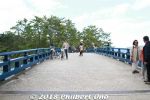
The bridge to Amanohashidate.Nov 27, 2018
|
|
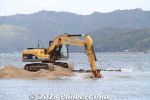
The sand spit gets shorter each hour.Nov 27, 2018
|
|
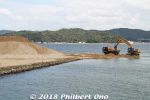
Amanohashidate's finger of sand that keeps growing. Every few years, they have to remove the excess sand, otherwise it will become another sandbar impeding shipping.Nov 27, 2018
|
|
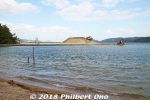
Amanohashidate's finger of sand that keeps growing. Every few years, they have to remove the excess sand, otherwise it will become another sandbar impeding shipping.Nov 27, 2018
|
|
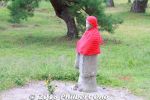
Jizo statue on Amanohashidate.Nov 27, 2018
|
|

Emperor Showa's Amanohashidate poem.Nov 27, 2018
|
|
| 2715 files on 11 page(s) |
1 |
 |
 |
 |
 |
|